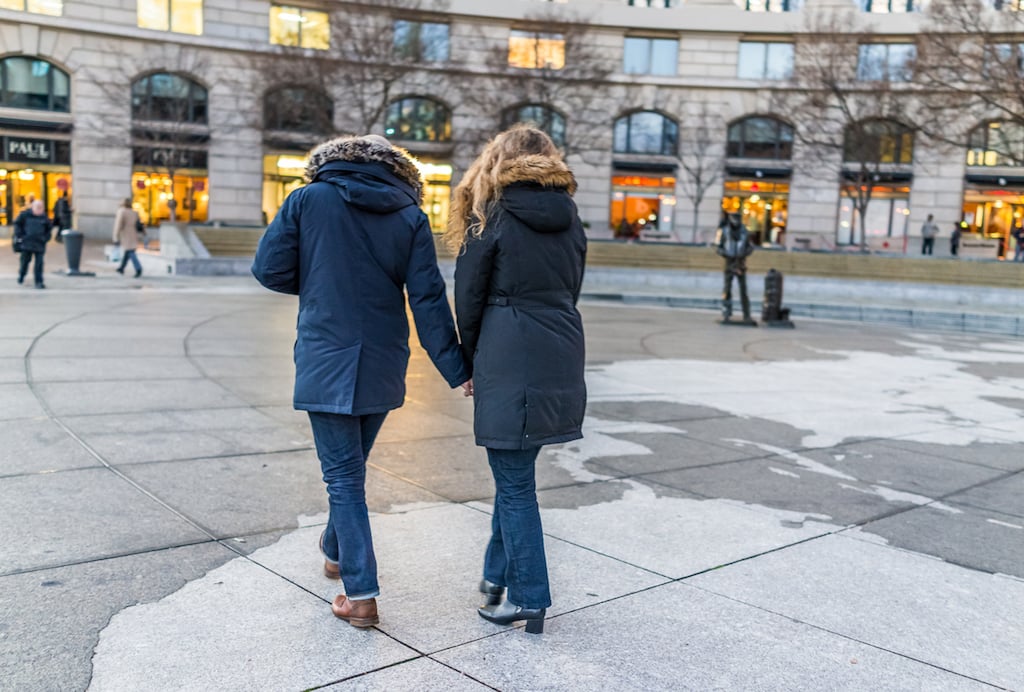If you don’t subscribe to the Washington Post in print, you probably missed an essential facet of its front page story Friday about our region’s bitterly cold weather. Sure, you could marvel at the fact that 14 people contributed reporting to the article, in addition to the two writers whose bylines ride along the top. You could, if you’re a news fan, admire its opening sentence or the tight writing that gave the illusion the Post was everywhere at once yesterday, getting tire-shine tips from the manager of a Largo car wash, marching through Annapolis with Governor Larry Hogan, chatting with a hatless cop in Arlington. But for the real deal, you needed to walk outside, shake your head at the chill, then step inside, unfold the paper, and let your scanning eyes stop on a story about what you just felt.
That meta touch is baked into the Post‘s old-school weather stories, says Lynda Robinson, the local enterprise editor who shepherded the piece into being. “There’s no one getting the print edition of the Post who is not affected by the weather,” she says, fondly remembering a March 2015 piece about late snow that quoted people in places named after spring: a resident of Spring Road in Springfield, the sales manager of the Spring Valley Ski Center, the owner of Spring Garden Chinese restaurant in Silver Spring. “This, to me, is probably the best one we’ve ever done,” Robinson says.
Steve Hendrix anchored that story as well as the one we are discussing here, stopping at the National Gallery of Art’s skating rink Thursday morning and leaving with that marvelous lead sentence in his pocket: “It was too cold to, among other things, ice skate Thursday morning.” Hendrix “knew right away” that was how the article should kick off, says Robinson, who has been at the paper for nearly 18 years and remembers well the era of former Executive Editor Leonard Downie Jr., an untiring advocate of the DC weather story.
The article leveraged the Post‘s firepower in a manner at which a reporter from a much smaller institution can only marvel. Deputy local editor Monica Norton got the piece moving, cranking up all that reporting wattage as Robinson assigned the story to Hendrix and asked John Woodrow Cox to bring in some cold hard facts from Arlington. Other reporters hit up the contacts on their beats for notes—local governments, public safety agencies, Metro—and fed Hendrix with so much stuff that the Post decided to break out a second article, likely to run Saturday, about how organizations for the homeless are handling the cold. Hendrix then ran all that copy through his sensibility. Tara Bahrampour, who would ultimately share the byline with Hendrix, got up to the National Zoo, where her work fueled one of Hendrix’s best groaners: “But at the National Zoo, the animals braved the cold without clothing. (Yes, yes. The lions and tigers were bare. Oh my.)”
“When you read that piece you can’t tell that he wasn’t the reporter for all of it because he takes it and runs it through his lyrical style, and he’s able to translate what other people have given him into his own voice,” Robinson says.
The Post does fewer of these weather stories these days. In part that’s a reflection of the fact that the Capital Weather Gang does such a fine job of handling web coverage. (In fact, Hendrix and Bahrampour’s story quotes yet another Post employee, Capital Weather Gang chief meteorologist Jason Samenow, on whether the time is right to identify the source of our frigid weather as the polar vortex.) “You’re not really aimed at getting something online quickly because we already have that,” Robinson says. The lyrical weather article can thus be “less bloggy and more of a traditional A1 news story.”
Which speaks to the other essential characteristic of the Post weather story: They hark back to a time when a newspaper was one of this region’s most important pieces of connective tissue, as common to most people’s experience of Washington as, well, the weather. Downie championed them because they knitted the community tighter together as Mother Nature did her worst. “I have no doubt that if Len read this one he would be delighted,” Robinson says.
“In fact I did like the weather story today,” Downie says by phone from the District, where he is preparing for what he plans to be his last winter teaching journalism in Arizona. This time next year he’ll fulfill his cold-weather obligations to Arizona State University’s Walter Cronkite School of Journalism and Mass Communication, where he is a professor, from its DC campus on 18th and I streets, Northwest. Friday’s story was “nicely written,” Downie says, noting that a TV news package about the cold would likely have only checked at one location–just the car wash, say, or just the zoo. “One of the strengths of journalism is shared experiences,” he says, and weather is “the most widely shared experience there is.” What makes a good weather story? Facts, Downie says, but also feelings. Readers need to know “what’s the effect on people’s lives and also to feel that shared experience and read something that gives you a sense of that community.”




















